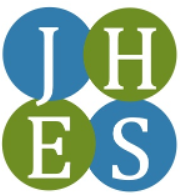The Effectiveness of Using the Jigsaw Technique in Teaching Cellular Structure among Selected Grade 7 Students of the Laguna College, San Pablo City, Philippines
ABSTRACT
In a collaborative learning environment, students work with their classmates to achieve a common goal. One technique being used to stimulate collaboration among students is the Jigsaw technique. The main topic explored for teaching in this study was on “Cellular structure”. This study aims to compare the knowledge gain of students taught using the Jigsaw technique and Traditional technique; differentiate the level of engagement of students in using these two techniques; and analyze students’ attitudes towards learning Cellular Structure using the Jigsaw technique. It is hypothesized that there is no significant difference in terms of the mean knowledge gain and student engagement in the Traditional classroom and Jigsaw classroom. Using experimental research design, data were gathered from Grade 7 students through pre- and post-test, evaluation questionnaires, and focus group discussion. Students were grouped into two based on the closeness of their mean first quarter grade. Test results were analyzed using independent samples t-test. Thematic analysis was conducted to analyze narratives from the focus group discussion. Overall, the students found the Jigsaw technique to be better than the traditional method in keeping them engaged. They also noted that the Jigsaw methodoffered fun ways to learn the topic. Drawing on from the findings of this study, exploring collaborative teaching methods in teaching science lessons is highly recommended.

The Effectiveness of Using the Jigsaw Technique in Teaching Cellular Structure among Selected Grade 7 Students of the Laguna College, San Pablo City, Philippines
14 downloads0.00 KB
AUTHORS
Pamela Jean Cacao Salubayba, Evelie Serrano, Rowena Baconguis, Emely Dicolen
